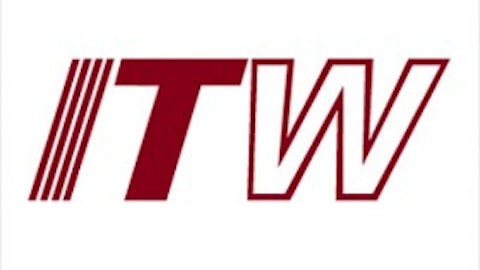Watch out, grocery chain investors: The $250 billion freight train that is Wal-Mart Stores, Inc. (NYSE:WMT) is looking to push you off the rails.
On Monday Wal-Mart announced changes across its sourcing, training, and operations “that will ensure the quality and freshness of the fruits and vegetables that it offers customers.”
The plan
So how, exactly, does this corporate behemoth intend to achieve its goal?
First, the initiative includes plans to purchase produce directly from growers with the guidance of new produce experts hired by the company. As a result, Wal-Mart Stores, Inc. (NYSE:WMT) will be able to take greater advantage of its own industry-leading network of distribution centers and trucking systems to bring fruits and vegetables to store shelves even faster than its current system allows.
Next, Wal-Mart Stores, Inc. (NYSE:WMT) will be performing “independent weekly checks in its more than 3,400 Supercenters, Neighborhood Markets and Express Stores that sell produce,” the reports for which will be sent to “every level of store management” to help benchmark itself and competitors on a week-over-week basis.
Finally, the company is launching “Fresh Produce Schools” and expanded training programs to better educate 70,000 employees — “including store managers, market managers, and produce department managers from every Walmart store in the U.S.” — on how to better handle fruits and vegetables.
The multibillion-dollar question
Personally, I can attest to being less than satisfied by the consistency and subpar quality of my local Wal-Mart Stores, Inc. (NYSE:WMT)’s produce, so it’s unsurprising they felt the need to address this as a wide-scale problem in the first place.
The larger question remains, however: Who stands to lose the most from Wal-Mart Stores, Inc. (NYSE:WMT)’s newfound passion for fresh produce?
On one hand, there’s Safeway Inc. (NYSE:SWY), which operates more than 1,600 locations in the U.S. and Canada, and recently achieved anemic same-store sales growth of just 1.5% from the year-ago period during its most recent quarter. Meanwhile, Safeway Inc. (NYSE:SWY) is already struggling to find growth as revenue remained essentially flat from the year-ago period at $10 billion.
And while Safeway is still a relatively large company, remember that it’ll be hard-pressed to match Wal-Mart’s incredible reach and pricing abilities. As a result, and considering Safeway already sported a typically razor-thin operating margin at 1.8% last quarter, the chain could certainly feel the hurt should any current customers defect in favor of Wal-Mart’s cheaper offerings.
Grocery megachain The Kroger Co. (NYSE:KR), on the other hand, may just have a fighting chance of competing with Wal-Mart’s low prices given its own fleet of more than 2,400 grocery stores. What’s more, The Kroger Co. (NYSE:KR) also enjoys the benefit of operating nearly 800 convenience stores and 348 high-margin, high-cash-flow jewelry stores including Fred Meyer, Littman, Barclay, and Fox’s Jewelers. Finally, Kroger also achieved decent 3.5% identical sales growth last quarter en route to growing sales 12.8% to $24.2 billion.
Even so, it’s hard to argue with the unrivaled convenience of Wal-Mart’s all-encompassing department store model, where consumers can effectively find nearly everything they need in a single shopping trip. By improving its produce-buying experience, then, Wal-Mart is intelligently removing one huge obstacle that’s currently keeping shoppers away.
Here’s who it won’t affect
That said, investors absolutely should not assume Wal-Mart’s initiative poses any realistic threat to specialty organic grocery businesses like Whole Foods Market, Inc. (NASDAQ:WFM) and The Fresh Market Inc (NASDAQ:TFM), which both typically serve very different client bases than those to which Wal-Mart caters.
Whole Foods Market, Inc. (NASDAQ:WFM), for one, is firing on all cylinders after its blowout first-quarter earnings results, which included sales growth of 13%, coupled with a 19% year-over-year increase in diluted earnings per share. What’s more, Whole Foods turned in a solid 6.9% increase in same-store sales, and managed to generate $178 million in free cash flow during the quarter. Lastly, Whole Foods has $1.3 billion in cash with no debt on its balance sheet, even after returning $74 million to shareholders in the form of dividends and share repurchases.





